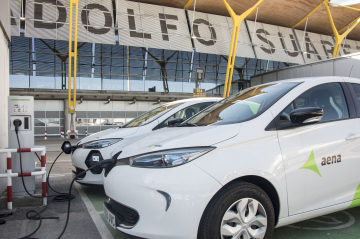
Electric vehicle recharge points in airports of Spain
- International
- Projects
- Electric vehicle recharge points in airports of Spain
Project management for investments in electric vehicle recharge points in airports
AENA includes its clients and suppliers (passengers, carriers, taxis, etc.) in its plan to combat climate change. Among other things, the Spanish airport operator aims to reduce its carbon footprint by 25% by 2025. In line with this policy, the company has taken the first step towards fitting its public parking facilities with 1,927 new charging points for electric vehicles at 32 airports with the aim of promote low-CO2 mobility in road transport for passengers, employees, and freight carriers to and from the airports it manages.
